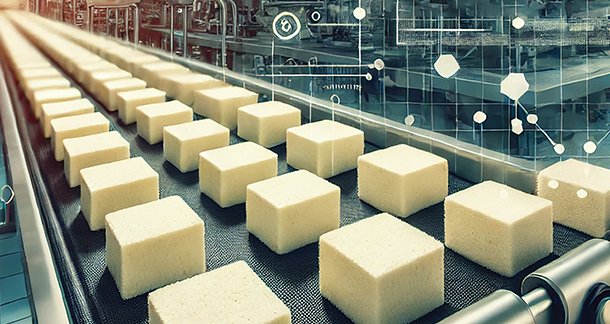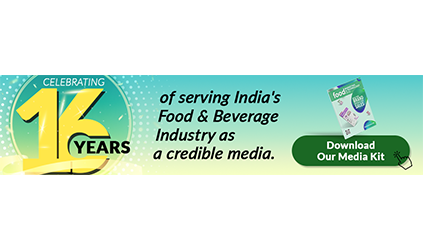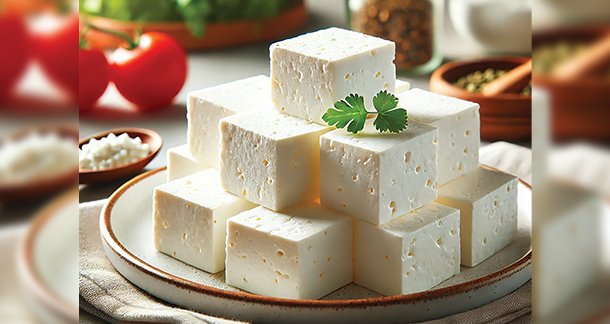Paneer, Indian Soft Cheese or Cottage Cheese, is made from curdling hot milk by adding vinegar or squeezing lemon syrup or citric acid. It is a non-fermented product containing a sweet citric flavor and is enriched with calcium, protein, and vitamin D. It is high in nutritional value making it consumable in either raw, cooked, grated, sliced, or crumbled form.
With this article, you will understand the different forms of paneer consumption, health benefits, innovative techniques, and the latest market trends in paneer manufacturing.
The Indian Paneer Market
Paneer, a dairy byproduct, is creating a buzz in the global food industry. Paneer has sown its roots in the Indian market and the major regions for it are Delhi, Haryana, Punjab, Madhya Pradesh, Uttar Pradesh, Rajasthan, Maharashtra, Gujarat, Andhra Pradesh and Telangana, Bihar, West Bengal, Orissa, Kerala, Tamil Nadu, and Karnataka.
The market study suggests that Uttar Pradesh holds the largest market share for Paneer in India. The Paneer market in Uttar Pradesh is flourishing because of the rising investment initiatives by the state government to promote the dairy industry.
Paneer’s nutritional benefits like being rich in protein and calcium have driven the global demand for traditional food and vegetarianism. The market reports state that the global paneer market was valued at USD 9.8 billion in 2023 and is projected to reach 1848.9 billion by 2032.
Paneer’s Health Benefits
Paneer’s nutritional benefits like containing vitamins B and D, phosphorus, dietary fiber, and omega-3 and omega-6 fatty acids are open to the consumers. It is also believed that consuming paneer is beneficial for various bone disorders as it is rich in protein and calcium. Paneer contains 15.9 grams of protein, 23.3 grams of carbohydrates, and 15.5 grams of fat per 100 grams.
This nutrient-rich combination makes it the go-to choice for those seeking high-protein and low-carbohydrate diets. This is why people have started adding paneer to their daily diet. Looking at the paneer’s positive effect on the human body, this dairy byproduct has been a buzz amongst fitness enthusiasts and health-conscious people.
Consumption Patterns
The Paneer consumption pattern of consumers is growing with the introduction of new product variants like organic and low-fat paneer, soft paneer, ready-to-eat, tofu, etc. Its growing popularity is reflected in an average consumption frequency of 2.25 times every year. It is also seen that around 1.97% of restaurants are including paneer on their menus.
People have started adding soft paneer to their diet. Soft Paneer is curdled milk with a soft spongy texture, made from full-fat buffalo or cow milk. It is known for its delicate texture and fresh taste making it a significant market driver accounting for 60% of paneer consumption. Now, Paneer acts as a substitute for various meat-related food items from pizzas and burgers to salads and sandwiches.

Innovative Techniques for Manufacturing Paneer
The innovations in food processing technology and equipment, packaging, distribution, and product variants, that include organic and low-fat options, are enhancing the market’s expansion and reach. There are various techniques that Paneer manufacturers are adopting, such as:
- Ready-to-Eat and Ready-to-Heat products.
- Pre-cut paneer blocks using Individual Quick Freezing (IQF) technology.
- Enhanced packaging solutions for extended shelf life and maintaining product quality.
- Blast freezing at –13°C and–32°C to prevent from any microbial growth.
- Heat treating the milk and many more…
Innovations in packaging and distribution with improved cold chain logistics are making paneer more accessible to international markets. Paneer manufacturers are adopting fully automated plants with advanced technologies and equipment.
Latest Paneer Trends
With the changing dietary patterns, shifting consumer demand, and hectic schedules there’s been an inclination towards convenient food preparation methods. This has led to demand for Western food style over the traditional cooking method meaning the demand for pizza, sandwiches, wraps, ready-to-eat, ready-to-heat, etc., has surged. And this shift has created lucrative opportunities for food manufacturers. Additionally, these manufacturers are updating their paneer portfolio with a variety of paneer items like masala, protein-enriched, low-fat, and vegetable-impregnated.
The increasing number of hotels, cloud kitchens, and quick service restaurants (QSRs) is driving the demand for paneers while preparing various Indian-traditional cuisines and salads.
Paneer Can Also Be Used As
Paneer is often used as a primary ingredient in Indian cuisines with other vegetables like peas, potatoes, onions, tomatoes, etc., to prepare savory dry, semi-dry, and gravy delicacies. Paneer/Chenna is not only used to prepare flavorful dishes but also to prepare Indian sweets like rasgulla, ras malai, etc.
While considering the health benefits Paneer offers it is also necessary to ensure that the Paneer you buy is from a place that is hygienic and well-known. This is important due to the adulteration practices that are increasingly taking place in the local market.
How to Identify Adulterated Paneer?
A fake paneer or adulterated paneer is made with a mixture of milk powder, water, urea, and palm oil, and curdled with lime juice and acetic acid. To understand the difference between natural paneer and artificial paneer one must follow these steps:
- Use of Hands: Mash the Paneer with clean and bare hands, if it crumbles, it’s natural.
- Use of Iodine Tincture: Boil and cool down the Paneer then add a few drops of iodine tincture, if the color changes to blue, it’s artificial.
- Use of Arhar Dal: Boil and cool down the Paneer then add tur dal and let it rest for 10 mins, if the color changes to light red, it’s artificial.
Conclusion
The consumer demand for paneer in various forms is frequently changing, this has given paneer manufacturers a chance to diversify their dairy portfolios. Paneer is set to shoot the global market with significant growth by 2032. The inclination of convenience food is constantly shaping the consumer’s consumption patterns. Quick and easy cooking filled with flavors and healthy options is what everyone is after. Manufacturers have identified this urban area’s needs and innovated ready-to-cook paneer products and pre-cut variants which meet the needs of the time-constrained consumers.
About the Author
Neologic Engineers provides turnkey processing solutions for companies in dairy, prepared food, fruits and vegetables, beverages, home and personal care cosmetics, and allied industries.
Paneer, Indian Soft Cheese or Cottage Cheese, is made from curdling hot milk by adding vinegar or squeezing lemon syrup or citric acid. It is a non-fermented product containing a sweet citric flavor and is enriched with calcium, protein, and vitamin D. It is high in nutritional value making it consumable in either raw, cooked, grated, sliced, or crumbled form.
With this article, you will understand the different forms of paneer consumption, health benefits, innovative techniques, and the latest market trends in paneer manufacturing.



